The Masai Mara, or simply the Mara as the locals refer to it, is the most popular national  reserve in Kenya. It’s the northern most part of the Serengeti and hundreds of thousands of game animals roam the plains. And the best part? The Mara is a short 3 hour drive away from our village on Lake Victoria.
reserve in Kenya. It’s the northern most part of the Serengeti and hundreds of thousands of game animals roam the plains. And the best part? The Mara is a short 3 hour drive away from our village on Lake Victoria. Paul and I have been anxious to take a break from work and visit the Mara and our chance came over the July 4th weekend. We arranged with our Project Director to borrow an ambulance which we packed with provisions, a coal burning cook stove, a cooler and REI tent left by previous volunteers. Our plan was to camp near the Oloololo Gate on the western side of the park and to check out the resorts for our next trip.
When we arrived late Friday, we found that we were the only ones registered to camp there. The camping area is actually inside the park so animals are free to graze in the area. We were assured that it’s safe to sleep in a tent and none of the animals would bother us but not to go out walking inside the park. We were also warned not to leave the vehicle when driving.
So, with those assurances and warnings we set up camp and went for a late day game drive. We immediately saw warthogs which crossed the road in front of us then disappeared into the tall savannah grass. Then we spotted a large herd of elephants coming toward the road. We stopped the vehicle on the road and waited for them to cross. There were many large adults, several yearlings and one that looked to be a newborn.
 Here’s me breaking rule #1- I quickly regained my senses and got back in the vehicle.
Here’s me breaking rule #1- I quickly regained my senses and got back in the vehicle.
After another hour of spotting animals we headed back to our camp just as dark ominous clouds in the east let loose with heavy rains. By the time we got back to camp our tent and the pads we planned to sleep on were drenched. The tent apparently isn’t waterproof so we went with Plan B- sleeping in the ambulance. By the time we got set up and made a quick dinner it was nearly dark. We looked through the foggy  windshield and saw what looked like a dark mass moving toward us. We hastily wiped off the windows and could see through the sheets of rain a large bull elephant grazing nearby. It continued on through the camp grounds, walking within about 10 yards of our vehicle but paying no attention to our intrusion.
windshield and saw what looked like a dark mass moving toward us. We hastily wiped off the windows and could see through the sheets of rain a large bull elephant grazing nearby. It continued on through the camp grounds, walking within about 10 yards of our vehicle but paying no attention to our intrusion.
Around July or August every year millions of wildebeests migrate from the Serengeti to the northern grasslands of the Mara. The timing of the crossing is based in part on how much rain the southern Serengeti gets during the big rainy season. The park rangers keep a close eye out for the first wildebeests to cross and then spread the word to all the resorts. This year the first wildebeests started to cross on July 3rd- the day before our arrival. They always make the crossing at the same places along the Mara River where huge Nile crocodiles are lying in wait. Of the first group to cross, many drown when the river is high and those who follow cross on the “bridge” made up of their bodies.
The rangers told us that last year they had very heavy rains before the migration season so the river was running very high. They estimate that about 5000 wildebeests died during the crossing.
On Saturday we hired a ranger as our guide for the full day. We picked him up at 8 AM and headed into the bush in search of the more elusive animals including the black rhino. They were hunted nearly to extinction by poachers who get a fortune for each horn. There are only about 30 left in the Mara so they’re very hard to see. He took us down along the river, through heavy vegetation where we saw hundreds of baboons, zebras, warthogs, hippos, crocs and giraffes- but no rhinos. One of our favorite sights of the day was that of giraffes running on the savannah. They’re elegant, graceful and yet gawky at the same time. We also spotted a pair of lionesses with their cubs sleeping in the bush.
warthogs, hippos, crocs and giraffes- but no rhinos. One of our favorite sights of the day was that of giraffes running on the savannah. They’re elegant, graceful and yet gawky at the same time. We also spotted a pair of lionesses with their cubs sleeping in the bush.
 Late in the morning we saw a flock of large birds that turned out to be dozens of White-backed vultures eating the carcass of a warthog. They are often the first to arrive after the hyenas eat their fill. We read that a large group of White-backed vultures can eat an impala in 10 minutes. The very scary looking Lappet-faced vulture arrived later and was large enough to scare off the other vultures- at least for awhile. It was a sight right out of National Geographic.
Late in the morning we saw a flock of large birds that turned out to be dozens of White-backed vultures eating the carcass of a warthog. They are often the first to arrive after the hyenas eat their fill. We read that a large group of White-backed vultures can eat an impala in 10 minutes. The very scary looking Lappet-faced vulture arrived later and was large enough to scare off the other vultures- at least for awhile. It was a sight right out of National Geographic.
We drove to the Mara River near the Tanzania border to look at one of the traditional migration spots. We could see thousands of wildebeests and zebras grazing on the other side, preparing to cross. Throughout the day we were constantly amazed as the animals and vegetation of the Mara revealed itself. Our ranger laughed at our frequent joyful outbursts when we spotted something new. “You have never seen a giraffe run before?” he asked us.At one stop I spotted a lizard with remarkably vivid colors which to his amazement and amusement I stopped to photograph. People who live around such beauty and diversity in their daily lives often lose sight of how miraculous their world is.
Throughout the day we were constantly amazed as the animals and vegetation of the Mara revealed itself. Our ranger laughed at our frequent joyful outbursts when we spotted something new. “You have never seen a giraffe run before?” he asked us.At one stop I spotted a lizard with remarkably vivid colors which to his amazement and amusement I stopped to photograph. People who live around such beauty and diversity in their daily lives often lose sight of how miraculous their world is.
Our day ended with a beautiful sunset and a hot meal around the campfire. We lay awake listening to the night sounds of the Mara and woke with the sunrise. It was another glorious day and as we got a fire going for coffee we noticed a couple of tourist vehicles entering the park and stopping about ¼ mile away from us.  They stayed there long enough to make us curious. We packed up and drove over to find a large male lion lying under a tree and another in the tall grass. We turned off the engine and just watched for about 15 minutes. Then one got up and went over to the
They stayed there long enough to make us curious. We packed up and drove over to find a large male lion lying under a tree and another in the tall grass. We turned off the engine and just watched for about 15 minutes. Then one got up and went over to the  buffalo they must have killed the previous night. He turned it over and began to feed on it again. We were far enough away to allow it to eat unhindered but close enough to hear crunching of bones. Once it got it’s fill it went back for a nap. We drove over to the tree once more and just as approached it I realized the second lion was hidden in
buffalo they must have killed the previous night. He turned it over and began to feed on it again. We were far enough away to allow it to eat unhindered but close enough to hear crunching of bones. Once it got it’s fill it went back for a nap. We drove over to the tree once more and just as approached it I realized the second lion was hidden in  the tall grass a few short feet from our vehicle. I whispered urgently to Paul to “Back up! Back Up!” I could feel my heart pounding with a mixture of fear and exhilaration at our proximity to that magnificent creature. That morning was the high point of a trip that had many wonderful moments.
the tall grass a few short feet from our vehicle. I whispered urgently to Paul to “Back up! Back Up!” I could feel my heart pounding with a mixture of fear and exhilaration at our proximity to that magnificent creature. That morning was the high point of a trip that had many wonderful moments.
Our final stop was a planned visit at a Masai village outside the park. We picked up our ranger at the appointed time and drove the short distance to their village. The chief welcomed us and talked to us about their culture. They live in communities of about 50 families and marry only other Masai, although from a different community. They were traditionally nomadic herders and their cattle are still a big part of their culture. Their homes are made of cow dung and they eat only cow’s milk, meat and blood. Some of the women greeted us with a song during which I was invited to stand with them. I felt their song resonate in my chest and it filled me with a sense of joy
although from a different community. They were traditionally nomadic herders and their cattle are still a big part of their culture. Their homes are made of cow dung and they eat only cow’s milk, meat and blood. Some of the women greeted us with a song during which I was invited to stand with them. I felt their song resonate in my chest and it filled me with a sense of joy  (which is why I look so goofy in this photo). Some of you old timers will remember Granny Clampett from the “Beverly Hillbillies” singing “I got joy, joy, joy, joy down in my heart” while cooking up a batch of her moonshine. I must say, that captures the moment for me.
(which is why I look so goofy in this photo). Some of you old timers will remember Granny Clampett from the “Beverly Hillbillies” singing “I got joy, joy, joy, joy down in my heart” while cooking up a batch of her moonshine. I must say, that captures the moment for me.
I'll leave you with a couple more photos from the Masai village. Safe journeys!


 reserve in
reserve in 









































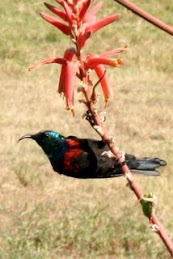
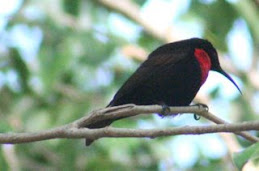










































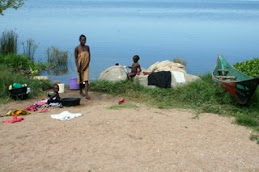

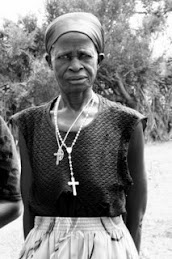






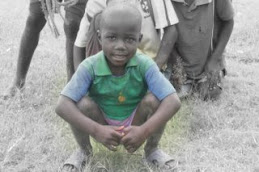


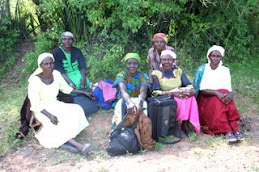



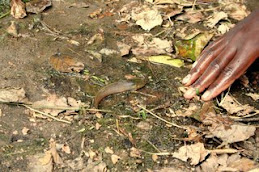



























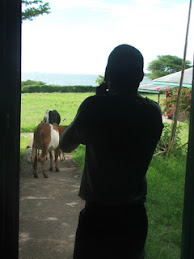

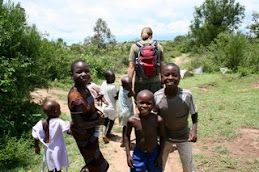













































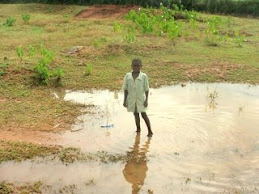
























1 comment:
Hi Darcie - your blog just keeps getting better and better. Between you and Maggie I feel like I am beginning to know Africa. Have you heard that Margie and I will go to Uganda in February 2009 - any chance of a mid way hook up or something? We hope to stay long enough and see enough to have a sense of how people live and the education needs a Future(s) of Ed project I am developing might address.
Anyway thanks for sharing your life with us,
Alana
Post a Comment